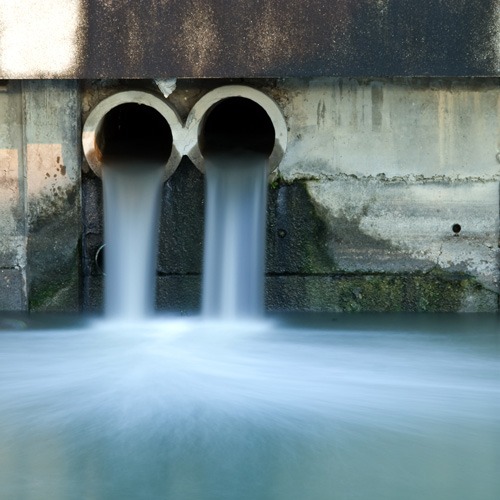Wastewater & Effluent Treatment
Accepta’s extensive range of high performance aluminium based coagulants have been specially formulated for use in a wide range of demanding commercial, industrial and municipal applications involving the treatment of potable water, process waters, wastewater and effluent treatment.
Waste Water & Effluent Treatment

Coagulant FAQs
Coagulation is an essential process in wastewater treatment, used to remove impurities from the water by causing them to clump together and settle out. There are several types of coagulants available for use in wastewater treatment, each with their own unique properties and applications. In this article, we will explore the different types of coagulants and how they are used in various industries, including food, dairy, oil, textiles, and chemical industries.
- Aluminum-based coagulants: Aluminum-based coagulants, such as aluminum sulfate (alum) and polyaluminum chloride (PAC), are commonly used in wastewater treatment in various industries. In the food industry, they are used to treat wastewater from food processing plants, such as meat and poultry processing, dairy processing, and vegetable processing. In the dairy industry, aluminum-based coagulants are used to remove impurities such as fat and protein from milk and cheese whey. In the oil industry, they are used to treat wastewater from oil and gas production, as well as refining and petrochemical processes. In the textile industry, they are used to treat wastewater from dyeing and printing operations.
- Iron-based coagulants: Iron-based coagulants, such as ferric chloride and ferrous sulfate, are also commonly used in wastewater treatment. In the chemical industry, they are used to treat wastewater from chemical production and processing plants. In the paper industry, they are used as a sizing and retention agent to improve paper quality and reduce waste. In the emulsion cracking process, they are used to separate oil from water in oilfield production.
- Organic coagulants: Organic coagulants, such as chitosan and polyamines, are derived from natural materials and are less commonly used in wastewater treatment. However, they are gaining popularity in the water recycling industry, where they are used to treat wastewater for reuse in various applications.
The treatment of potable and process waters, sewage effluent, and paper processing are some of the major applications of coagulants.
In the treatment of potable and process waters, coagulants are used to remove suspended solids and other impurities from the water.
In sewage effluent treatment, they are used to remove organic matter and nutrients from wastewater before it is discharged into the environment.
In the paper processing industry, coagulants are used to improve paper quality and reduce waste.
Coagulants make up an essential component of wastewater treatment, used to remove impurities from the water and improve its quality. Thus ensuring the safe and sustainable management of our water resources.
Matching the correct coagulant and flocculant for your application requires consideration of several factors, including the nature of the wastewater, the type and concentration of pollutants, and the desired quality of the treated water.
Here are some general guidelines for selecting coagulants and flocculants:
- Assess the characteristics of the wastewater: The pH, temperature, and total dissolved solids (TDS) of the wastewater can all affect the effectiveness of coagulation and flocculation. Additionally, the type and concentration of pollutants present in the wastewater will impact the choice of coagulant and flocculant.
- Determine the optimal dosage: The optimal dosage of coagulant and flocculant is dependent on the concentration and type of pollutants present in the wastewater. This can be determined by conducting jar tests in the lab.
- Choose the right type of coagulant: There are many different types of coagulants, including inorganic and organic options. Inorganic coagulants like aluminum sulfate and ferric chloride are commonly used for the treatment of wastewater. Organic coagulants like polyamines and polyDADMAC are generally used for treating wastewater with a low pH or low alkalinity.
- Choose the right type of flocculant: There are several types of flocculants, including cationic, anionic, and non-ionic. Cationic flocculants are commonly used for wastewater treatment as they are effective at removing negatively charged particles. Anionic flocculants are useful for treating wastewater with a high concentration of positively charged particles. Non-ionic flocculants are often used in wastewater treatment when there is a low concentration of pollutants.
- Consider the cost: The cost of the coagulant and flocculant will also need to be taken into account when selecting the right chemicals for your application.
It is important to note that there is no one-size-fits-all solution when it comes to wastewater treatment. You should consult with a professional to determine the best coagulant and flocculant for your specific application.
Anionic sulphur-based heavy metal precipitants, also known as sulphide precipitation, are chemicals used to remove heavy metals from wastewater. These precipitants work by reacting with heavy metal ions in the water to form insoluble metal sulphides, which can then be separated from the water through sedimentation or filtration.
The process of sulphide precipitation involves adding anionic sulphur-based precipitants, such as sodium sulphide or sodium hydrosulfide, to the wastewater. The sulphide ions in the precipitant react with the heavy metal ions in the water to form insoluble metal sulphide. For example, the reaction between sodium sulphide and lead ions can be represented as follows:
Pb2+ + Na2S → PbS↓ + 2Na+
In this reaction, lead ions (Pb2+) react with sulphide ions (S2-) from the sodium sulphide to form insoluble lead sulphide (PbS), which precipitates out of the water as a solid.
The effectiveness of sulphide precipitation depends on several factors, such as the pH of the water, the concentration of the heavy metal ions, and the presence of other chemical compounds in the water that may interfere with the reaction. Generally, sulphide precipitation works best in acidic conditions (pH less than 7), and the effectiveness of the process decreases as the pH of the water increases.
Sulfide precipitation is an effective method for removing heavy metals from wastewater, but it can also have some drawbacks. For example, the sulphide ions in the precipitant can react with other chemical compounds in the water to produce hydrogen sulphide gas, which can be hazardous and unpleasant. Therefore, sulphide precipitation should be carried out in well-ventilated areas and with appropriate safety measures in place.
Sulphide precipitation is an effective method for removing heavy metals from wastewater, but it requires careful control of the pH and other factors to ensure optimal performance and safety.
Wastewater & Paper Processing Treatment Products
*Accepta 8304 & 8306 have a higher charge density than conventional 18% & 10% PAC’s.
As a consequence, these blends are much more effective for suspended solids removal and particulate BOD/COD reduction.
The products have a basicity level of 70% as opposed to 35 – 40 % for 18% PAC.
Therefore it will have less pH depression on the treated water and less adjustment will be required downstream (if currently applied).
General Wastewater, Paper Sizing - Suited to COD & Phosphate Reduction
Aluminium Hydroxide Chloride (10%) - Highly Cationic with Al Polymer in Low Concentration
Liquid
General Wastewater, Process Water & Paper Sizing - Suited to Turbidity, SS & COD Reduction
Aluminium Hydroxide Chloride (10%) - Highly Cationic with Al Polymer in High Concentration
Liquid
General Wastewater, Colour Removal inc. Ink, Organic Load & Phosphate Reduction
Aluminium Hydroxide Chloride (10%) - Highly Cationic with Al & Organic Polymers in Low Concentration
Liquid
General Wastewater & Paper Processing. Turbidity/SS, Organic Load & Phosphate Reduction
Aluminium Hydroxide Chloride (10%) - Highly Cationic with Al & Organic Polymers in High Concentration
Liquid
Water Recycling, Charge Neutralisation, Fixing Agent, Paper Processing & Turbidity/SS Reduction
Aluminium Hydroxide Chloride (16%) - Highly Cationic with Al Polymer in High Concentration
Liquid
Paper processing, Charge Neutralisation, Fixing Agent & Turbidity/SS Reduction
Aluminium Hydroxide Chloride (23%) - Highly Cationic with Al Polymer in High Concentration
Liquid
Drinking Water, Process Waters, Elimination of Sulphides and Turbidity/SS Reduction
Aluminium Iron Sulphate - Cationic Iron & Aluminium Ions in Acidic Solution
Liquid
General Wastewater, Swimming Pools, Potable water, Pulp & Paper
18% Poly-Aluminium Chloride coagulant (PAC)
Liquid
Wastewater, Drinking Water, Odour Control & Phosphorus & SS Reduction
40% Ferric Sulphate (Iron (III) Sulphate)
Liquid
Heavy Metal Precipitants
Code
Application
Description
Form
Wastewater & Effluent Streams
Sulphur based heavy metal precipitant - High Charge, Low molecular weight
Anionic Liquid
Wastewater & Effluent Streams
Sulphur based heavy metal precipitant - Fairly High Charge, Very High molecular weight
Anionic Liquid
Wastewater & Effluent Streams
Sulphur based heavy metal precipitant - High Charge, Very High molecular weight
Anionic Liquid
Polymer Coagulant Aids
Accepta supply a range of Floc forming Liquid emulsion and powder polymers (PAM) in a range of cationic and anionic charge density with low to high molecular weight.
The above coagulant products are compatible with most cationic polymers but stability tests should be carried out in individual applications.
Polyelectrolytes (most often referred to as Polymers) are long chain molecules that can produce highly charge ions when dissolved in water. Anionic Polymers produce a negative charge ion where as Cationic Polymers produce a positive charge ions when dissolved in water.

Ready to talk about water treatment?
Contact us
Please complete this form and we will be in touch